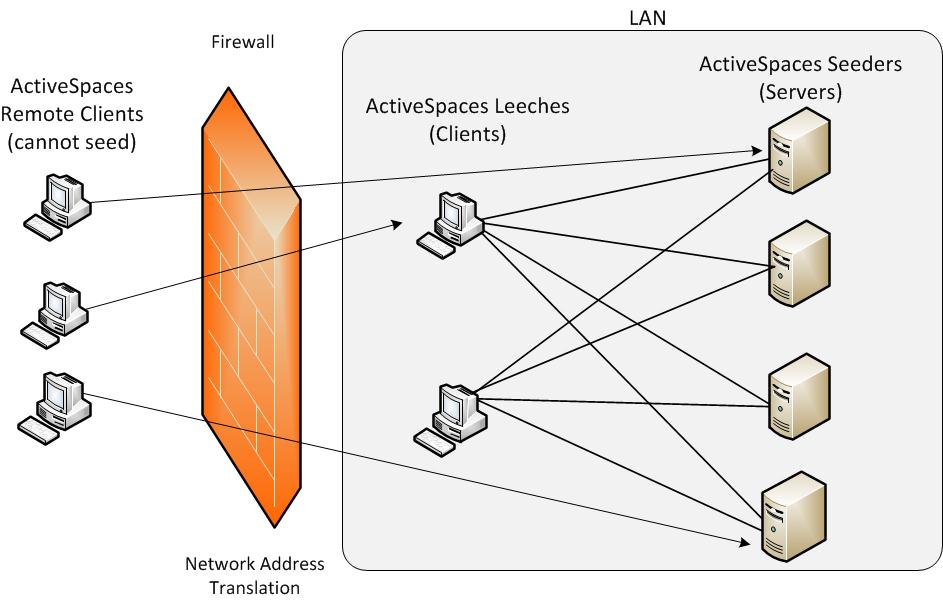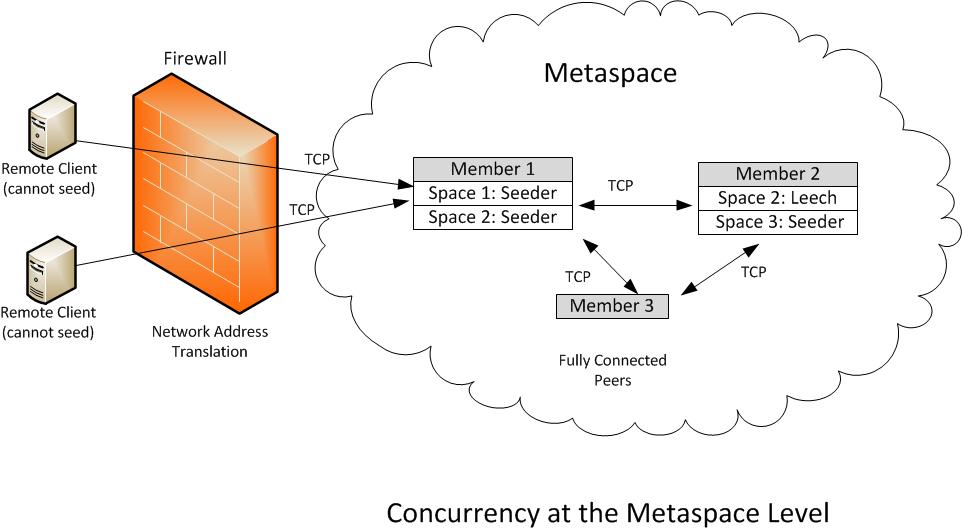Remote Client Architecture
In some situations, where nodes are unable to become full peers in the data grid, for example, when there is a firewall protecting a LAN, you can deploy ActiveSpaces nodes as remote clients. Remote clients can perform puts and gets, but cannot act as seeders or assume a management role in the core cluster.
Using remote clients also has the advantage of saving cluster processing overhead.
When you use remote clients, the remote clients can update the entries in the database, and ActiveSpaces seeders ensure that concurrency is maintained. Remote clients connect using TCP connections.
Warning: When a cluster restarts, ensure that you shut down and restart all cluster members. Ensure that you shut down and restart all remote clients ( including Admin if it is connected as a remote client) . Not doing so would result in the
REMOTE_CLIENT_TIMED_OUT error. If you do not restart the remote clients, you cannot perform any operation on the cluster.
Figure 6, Concurrency with Remote Clients, shows remote clients updating to a seeder (Member 1). The seeders in the metaspace ensure that the data replicated on Member 2 is synchronized with the data on Member 1.
Copyright © Cloud Software Group, Inc. All rights reserved.


